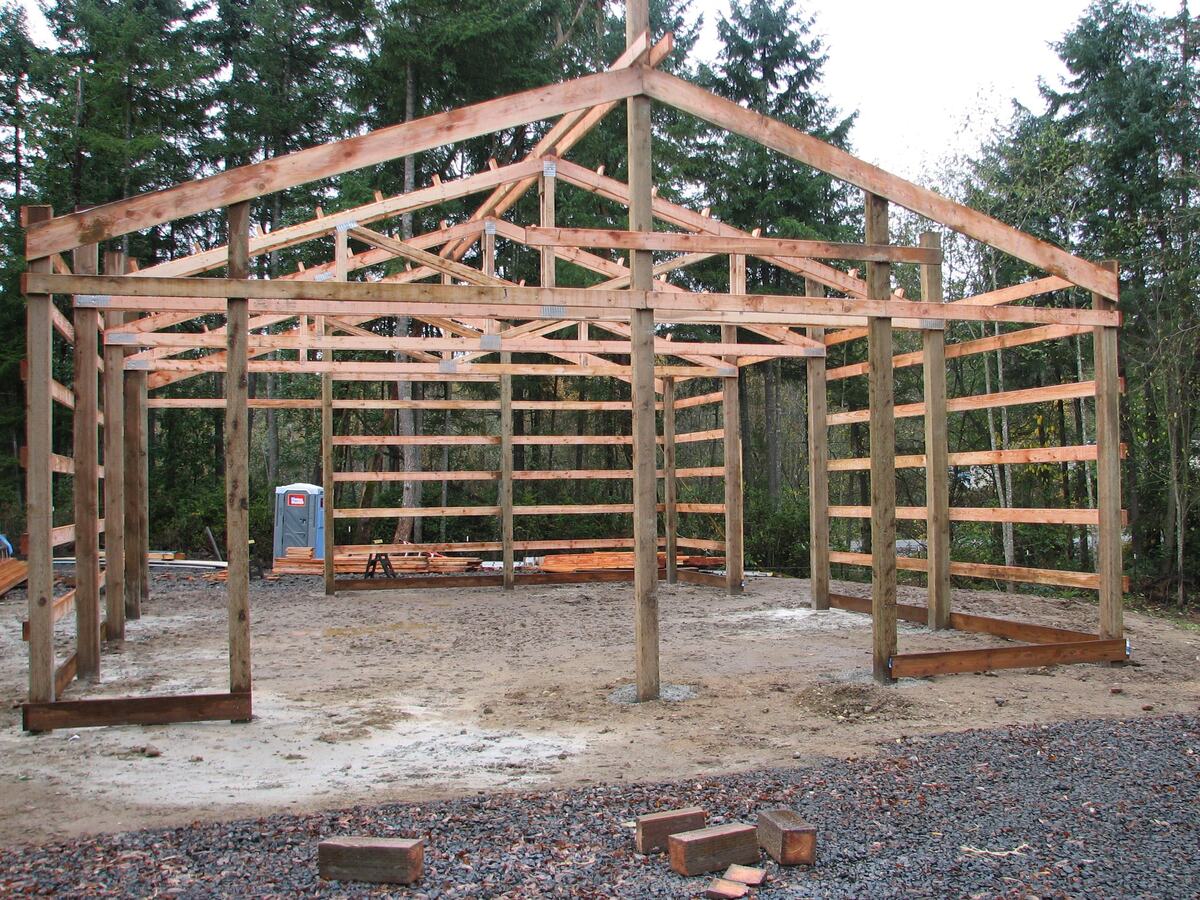Monday, November 11, 2024
How to Design and Build a Pole Barn for Agricultural Use

So you've decided to build your own pole barn. Good on you! It's a great way to get exactly what you need for your farm, and it can be a fun and rewarding project. But where do you even start?
Don't worry, I'm here to guide you through the whole process, from planning to construction. Let's break it down into manageable steps:
1. Planning Your Pole Barn Paradise:
First things first, you need to figure out what your barn will be used for. Do you need a hay storage area, a workshop, a place to house your livestock, or maybe all of the above?
Size Matters: Measure the space you have available and determine the dimensions of your barn. Don't be shy! Big barns are awesome, but make sure you have enough space to build and, more importantly, enough room to maneuver farm equipment.
Budget Blues: Consider how much money you're willing to spend. Building materials fluctuate, so research prices for wood, metal, concrete, and insulation. Remember, you can save some money by doing some of the work yourself.
Permits and Regulations: Check with your local building department for permit requirements. You'll need to comply with their codes and regulations for things like foundation type, building materials, and even electrical wiring.
2. Designing Your Dream Barn:
Now comes the fun part! You get to personalize your barn. Here are some design considerations:
Pole Placement: Choose sturdy wood poles (like pressure-treated pine or cedar) or metal posts for the foundation of your barn. The spacing of these poles will determine the overall size and strength of your structure.
Roofing Decisions: You've got options! Metal roofing is durable and affordable, but it can be noisy during heavy rain. Asphalt shingles are quieter but require more maintenance. If you're looking for a more rustic aesthetic, consider using cedar shake shingles.
Wall Options: Wood siding is classic and versatile. Metal siding is low-maintenance and resistant to weather. You can even get insulated metal panels for improved energy efficiency. Just make sure the wall covering matches the look and feel of your farm.
Doorways and Windows: The size and placement of doors and windows can impact the functionality and aesthetic of your barn. Plan for large doors to accommodate farm equipment and wide-open windows for good ventilation.
Interior Design: Think about how you want to use the space inside your barn. Do you need stalls for animals, storage shelves, or a workshop area? Planning for these features now will make the construction process smoother.
3. Building Your Barn: A Step-by-Step Guide
Now that you have a solid plan, it's time to get your hands dirty! The actual building process will vary depending on your design, but here's a general outline:
Foundation First: Start by preparing the foundation for your pole barn. You can choose from concrete piers, poured concrete slabs, or even gravel pads. Remember to get all the necessary permits and inspections before you start pouring!
Erecting the Poles: Once the foundation is set, it's time to install the main support poles. Use a level to ensure they are straight and plumb. Make sure to secure them to the foundation with concrete or metal brackets.
Framing the Walls and Roof: Now comes the framing! This involves using lumber to create the walls and roof structure. Make sure to use the correct size and type of lumber for each element and secure it properly.
Sheathing and Siding: Add sheathing (a layer of plywood or OSB) to the walls and roof before applying siding. Sheathing provides extra strength and support while acting as a base for your exterior finish.
Roofing Installation: Once the sheathing is in place, it's time to install your roofing material. Make sure to properly flash around any chimneys or vents and follow the manufacturer's instructions for installation.
Finishing Touches: Now comes the fun part! Add doors, windows, and other finishing touches. Install any interior fixtures like shelves, stalls, or electrical wiring. Don't forget to clean up and admire your handiwork!
4. Making Your Barn Functional and Safe
A pole barn is more than just a building; it's a functional space for your farm. Here are some tips for making it safe and efficient:
Ventilation: Ensure adequate airflow to prevent moisture buildup, especially during the winter months. Ventilation will also help keep the barn cool in the summer.
Lighting: Proper lighting is crucial for safety and productivity. Use LED lights for energy efficiency and longevity.
Animal Safety: If you're housing animals, make sure to provide them with a safe and comfortable environment. Use appropriate flooring, bedding, and water sources.
Fire Safety: Install smoke detectors and fire extinguishers to protect your barn and its contents. Make sure to have a plan in case of a fire.
5. Maintaining Your Barn for Years to Come:
A little bit of care goes a long way. Regular maintenance will help extend the life of your pole barn:
Inspecting for Damage: Check your barn regularly for signs of wear and tear, especially on the roof, siding, and foundation.
Cleaning and Repairs: Keep your barn clean and free of debris. Address any minor repairs quickly before they become bigger problems.
Painting and Staining: A fresh coat of paint or stain every few years will help protect your barn's exterior from the elements.
Regular Maintenance: Inspect your barn regularly for any signs of wear and tear, especially on the roof, siding, and foundation.
Building a pole barn is a big project, but with careful planning, you can create a beautiful and functional space for your farm. Remember to take your time, ask for help when needed, and most importantly, have fun with the process! And hey, if you're ever feeling overwhelmed, just remember that a well-built pole barn is a testament to your hard work and dedication. You've got this!
No comments:
Post a Comment